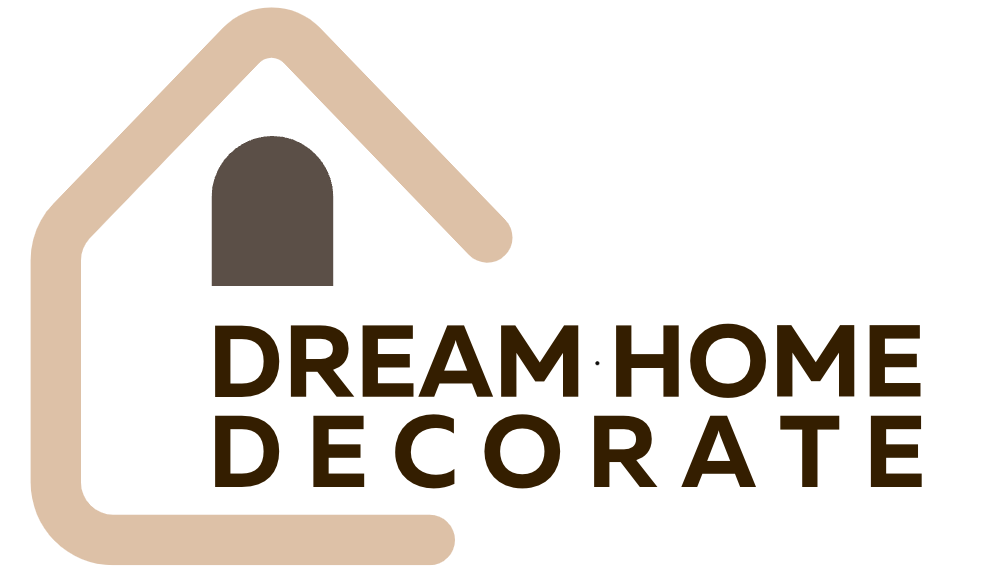Are you wishing to style your home and are looking for the best types of Glass? Glass can become an integral part of enriching the look of your home and offers functionality for any space. The reason why today we’ll be telling you about different types of Glass.
Choosing the right Glass for your homes and offices can be overwhelming. The different styles, materials, and features can be daunting to choose from. Hence, researching beforehand is critical as knowing the best alternative for glass applications is essential.
Whether trying to decorate a room in your house or your workspace, ensuring quality is also crucial. And with so many options, it can become challenging to make the right choice. So we are here to help and point you in the right direction by showing you different types of Glass.
Types of Glass
Shower Door Glass Sliding Design
Both glass door panels are sliding and reversible for “right” or “left” installation. With a long towel bar and two inner knobs, you can easily open/close the glass door.
A high-quality glass door bottom seal strip stops water from leaking out; no need to clean the bathroom outside.
It consists of a top-quality aluminum material frame and tempered clear Glass certified by ANSI, safe to use.
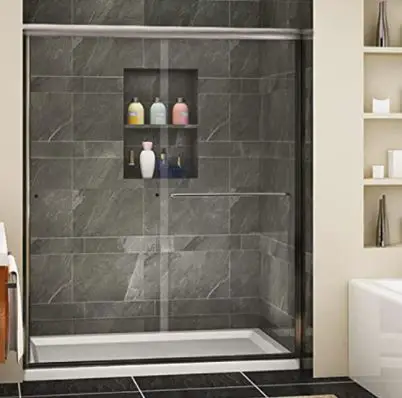
Features:
- Tempered Glass
- Aluminum frame
- Double sliding shower door
Brushed Metal Wall Mirror
Bring simple sophistication to any room with our 24″ x 36″ floating glass modern round corner gold-toned metal framed mirror. This simple brushed gold metal framed mirror is the perfect addition to various styles and design elements, offering a contemporary finish.
The Glass is safely custom inlaid and protected by the surrounding frame construction. The mirror is recessed into the deep frame and floated from the frame edges.
The mirror comes with reinforced D-ring hanging clips and the wall hardware and screws to hang it both.
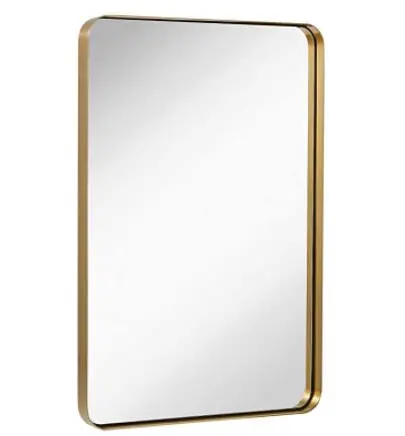
Features:
- Wall Mount
- Glass
- Rectangular
Window Film Privacy and Sun Control
Suitable for homes and office buildings directly exposed to the sun, which is the source of the UV rays, BDF NA20 window film provides an excellent UV blocking barrier.
This BDF NA20 film rejects about 99% of the UV rays, helping to reduce fading on your precious furniture, pictures, or other UV-sensitive belongings.
Dark, the black finish provides excellent daytime privacy, making it hard for unwanted eyes to see through.
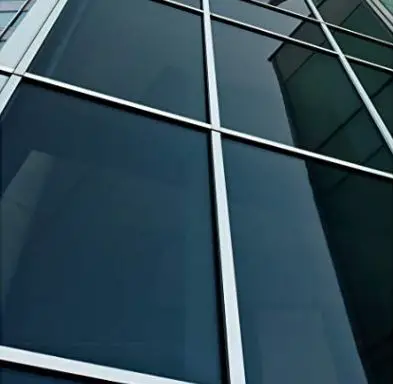
Features:
- UV Protection
- Peel and Stick
- Black finish
Frosted Window Film
This frosted window film provides 24 hours privacy protection for you, adds privacy and security to your home.
It makes the perfect amount of light, privacy so you can easily enjoy privacy and light!
The frosted window film needs no glue or adhesive, just water and soap. Easy to install and remove, no traces left after removing, reusable for multiply times.
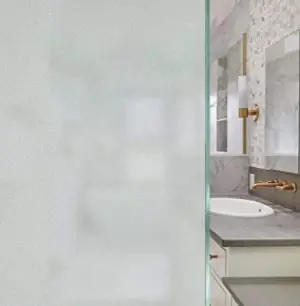
Features:
- UV ray protection
- Static Cling
- Glass
Common Questions About Types of Glass
What are the seven types of Glass?
- Annealed Glass. This is the base product that is used to form the more advanced glass types. It breaks into large and hazardous jagged shards.
- Heat Strengthened Glass. Also referred to as semi-toughened or semi-tempered, this is the product of when the annealed Glass is heated back up to around 650-700 degrees Celsius.
- Fully Tempered Glass. It is evenly heated using conduction, convection, and radiation to 700 degrees Celsius. Then it is cooled by blasting all sides uniformly to create a more excellent surface and edge compression.
- Laminated Glass. It’s created by layering sheets of heat-treated Glass with interlayers of polymeric material.
- Insulated Glass. A similar starting point to laminated Glass, but instead of filling the gap with resin, it’s filled with air or another noble gas (like argon) to influence the glass’ Ug value.
- Coated Glass. Coated Glass is manufactured for motif appearance, although it is usually scratch-resistant and corrosion-resistant.
- Acid Etched Glass. This Glass is chemically treated with an acidic material. The surface becomes distorted and results in a soft, matted, frosty appearance.
What types of Glass can be recycled?
All types of Glass can be recycled.
What type of Glass is heat resistant?
Heat-strengthened and fully tempered glasses are far more resistant to heat than annealed Glass. There are different ways that Glass is treated further to increase heat resistance, although insulated treated Glass is designed specifically with heat regulation in mind.
What are the four main types of Glass explained?
Annealed Glass
Annealed Glass is an essential product formed from the annealing stage of the float process. The molten Glass is allowed to cool slowly in a controlled way until it reaches room temperature, relieving any internal stresses in the Glass.
Without this controlled slow cooling, Glass would crack with relatively little change in temperature or slight mechanical shock. Annealed Glass is used as a base product to form more advanced glass types.
Heat Strengthened Glass
Heat Strengthened Glass is semi tempered, or semi toughened Glass. The heat strengthening process involves heating annealed Glass back up to about 650 to 700 degrees Celsius and then cooling it quickly, although not as fast as with toughened Glass.
The heat strengthening process increases annealed Glass’s mechanical and thermal strength, making it twice as challenging as annealed Glass.
Tempered or Toughened Glass
This is the most common type of Glass used in fences or similar structural applications. Annealed Glass is heated to about 700 degrees Celsius by conduction, convection, and radiation. The cooling process is accelerated by a uniform and simultaneous blast of air on both surfaces.
Laminated Glass
Any one of the above types of Glass can be laminated. The most commonly used finished product is two sheets of toughened Glass, laminated with a 1.52mm thick Polyiynil Butyral (PVB) interlayer.
Laminated Glass offers many advantages. Safety and security are the best known of these, so the interlayer holds laminated Glass rather than shattering on impact.
What are the different types of Glass and their uses?
Flat Glass
Used for windows, glass doors, flat Glass is the essential first product from the float process of making Glass. It has a uniform thickness and makes the base for more advanced types of Glass through further processing.
Toughened Glass
It can be used in a range of ways; for shower doors, glass furniture, shelves, etc., and holds the advantage of being far more resistant to breaks. The cooling process in toughened Glass creates counteracting stresses meaning that if it does break, the Glass will shatter into small, square fragments rather than shards, decreasing the risk of injury.
Patterned Glass
It is typically produced by passing heated Glass through rollers containing a regular pattern imprinted upon the Glass. This type of glass is often used for bathroom windows or doors were, like sandblasted Glass, light may be required but not total transparency.
Laminated Glass
It is a standard option where increased security may be needed, such as front doors, store window fronts, or car windscreens. Laminated Glass is held together by an interlayer, meaning that it will not shatter on impact, reducing the risk of break-ins and any hazards caused by shards of shattered glass.
Mirrored Glass
It is quite a mirror and can be produced in all sizes, from small bathroom mirrors to full-length wardrobe doors. It is made by applying a metal coating to one side of the Glass, typically silver, chrome, gold, or aluminum.
Coated Glass
Coated Glass is modified flat Glass to give it specific characteristics, such as insulating and resistance to infra-red. It is commonly used for double-glazed windows to improve home insulation.
Tinted Glass
If privacy is your priority, then tinted Glass is the ideal choice for any doors or windows in your home or business. Tinted Glass can also reduce harmful UV filtering, which will have health benefits for all the family.
Sandblasted Glass
This Glass is blasted with an abrasive material at high pressure to create a unique mist effect. This frosted look can be used to protect the privacy of bathroom windows and shower doors.
